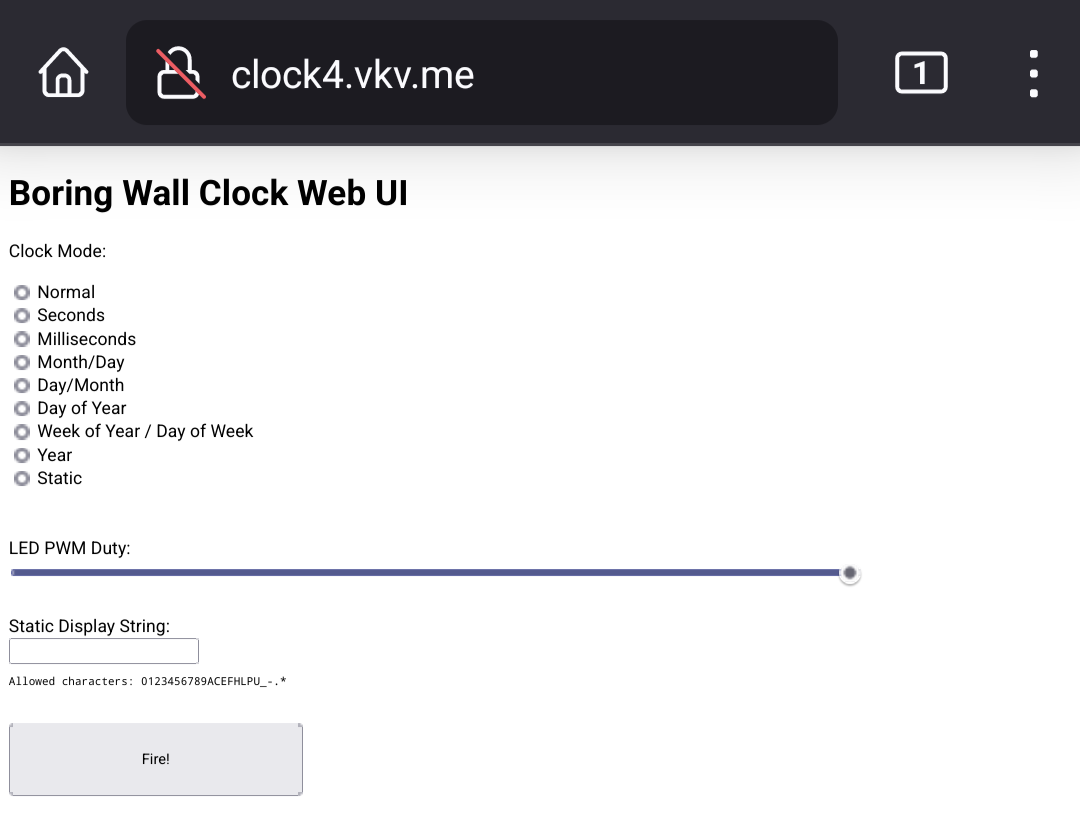This repository contains the hardware design and firmware for a simple digital wall clock which synchronizes with NTP servers over wifi.
https://www.youtube.com/shorts/mDYjYWJTemg https://www.youtube.com/shorts/xX9GlqPRe6Y
TL;DR:
The primary goal of this project was to replace several "atomic" clocks in my house which never successfully synchronize to WWVB with clocks that sync to NTP servers. Just for fun, a secondary goal was to accurately display milliseconds.
The clock is designed around the ESP32-C3, a low power single core RISCV SoC with wifi and bluetooth support. Four chained shift registers drive small MOSFETs to switch each of the 32 LED segments individually, to avoid rolling shutter artifacts in photos and videos.
The board is powered by a 1A 12V power brick, through a series diode for reverse polarity protection. A small 3.3V LDO powers the esp32 and registers, and a tiny PWM-capable constant current regulator powers each LED segment.
The clock can really count milliseconds, as demonstrated by this video taken with a 328fps ov9281 Y8 image sensor attached to the CSI input of a Raspberry Pi 4b. The exposure time is much less than a millisecond, even though the framerate isn't close to 1khz.
A minimal web interface allows the user to change brightness and clock mode. The clock also has a static mode that allows you to display arbitrary 4-character messages via HTTP POST requests.
I more or less followed the ESP32-C3 design guidelines when laying out the board, with the exception of RF impedence matching. The RF trace and my antennas are all 50 Ohm, which, with the 35 Ohm LNA output, results in a VSWR of ~1.4:1. The loss (versus a matched line) is less than an S-unit, so it wasn't worth the money for a prototype. Because wifi uses PSK and QAM, there is additional loss due to reflections, but for a prototype it is negligable.
- MCU ESP32-C3FH4
- 40MHz Crystal Q22FA12800332
- 32.768KHz Crystal M332768PWNAC
- Status LED HL-PC-3216S9AC
- 7-Segment LED SM453001L3-2
- 3.3V LDO SPX3819M5-L-3-3/TR
- 20mA LED Driver NSI45020T1G
- Protection diode M7
I had five prototypes manufactured and assembled by JLCPCB in Feburary 2023. The total cost per prototype was $49.66, broken down as follows:
- PCB (4-layer, ENIG): $12.84
- 4x Large LEDs: $9.56
- Rest of BOM and JLC SMT assembly: $22.19
- Shipping: $5.07
Obviously, that cost would decrease substantially if you made a larger order.
Only the "front" of the board (which is actually the back of the clock) has SMT components: the other side is entirely covered by the large LEDs. This allows you to pay for cheaper one-side assembly, and order the LEDs separately to solder them on yourself.

